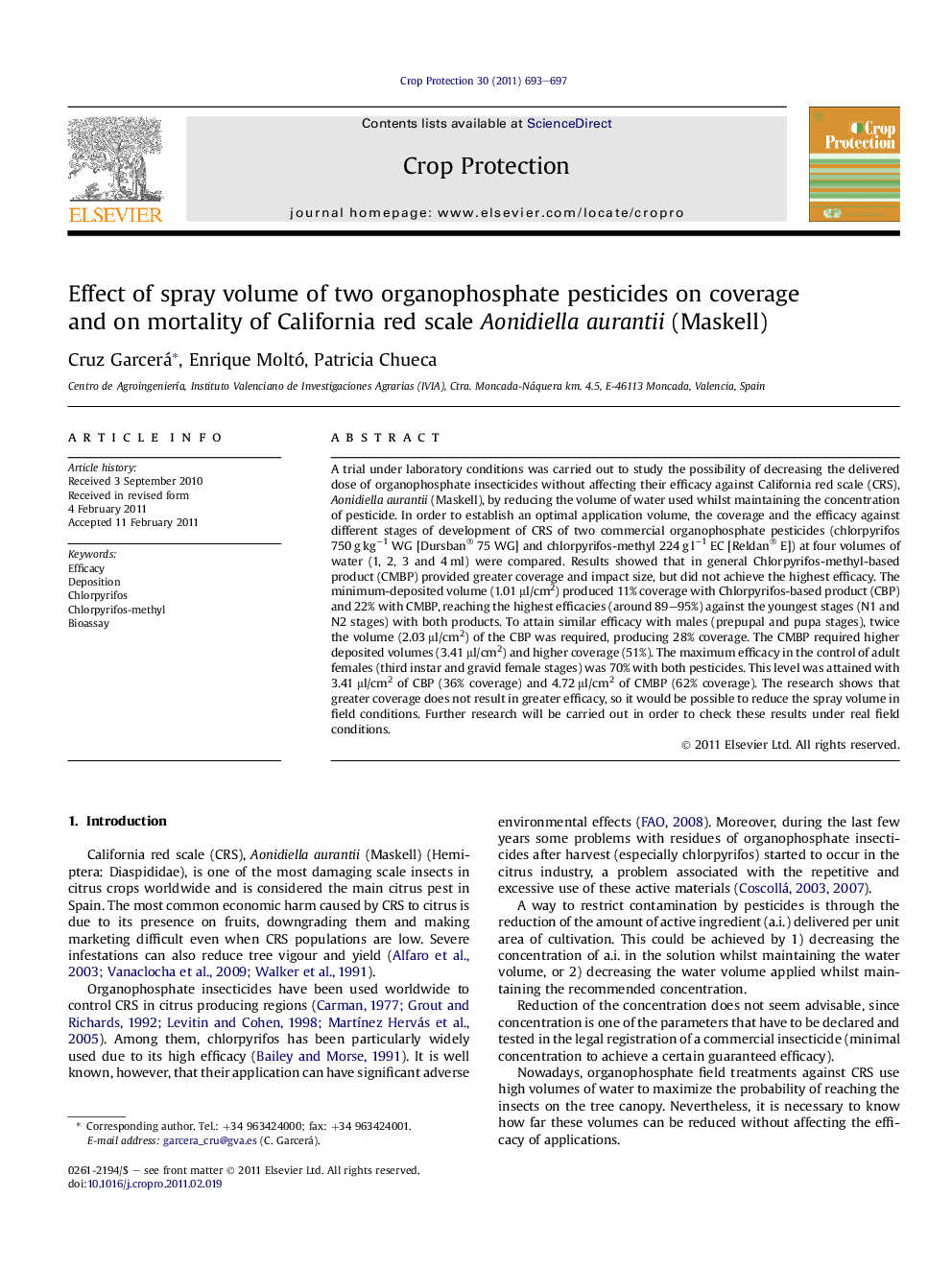| Article ID | Journal | Published Year | Pages | File Type |
|---|---|---|---|---|
| 4507063 | Crop Protection | 2011 | 5 Pages |
A trial under laboratory conditions was carried out to study the possibility of decreasing the delivered dose of organophosphate insecticides without affecting their efficacy against California red scale (CRS), Aonidiella aurantii (Maskell), by reducing the volume of water used whilst maintaining the concentration of pesticide. In order to establish an optimal application volume, the coverage and the efficacy against different stages of development of CRS of two commercial organophosphate pesticides (chlorpyrifos 750 g kg−1 WG [Dursban® 75 WG] and chlorpyrifos-methyl 224 g l−1 EC [Reldan® E]) at four volumes of water (1, 2, 3 and 4 ml) were compared. Results showed that in general Chlorpyrifos-methyl-based product (CMBP) provided greater coverage and impact size, but did not achieve the highest efficacy. The minimum-deposited volume (1.01 μl/cm2) produced 11% coverage with Chlorpyrifos-based product (CBP) and 22% with CMBP, reaching the highest efficacies (around 89–95%) against the youngest stages (N1 and N2 stages) with both products. To attain similar efficacy with males (prepupal and pupa stages), twice the volume (2.03 μl/cm2) of the CBP was required, producing 28% coverage. The CMBP required higher deposited volumes (3.41 μl/cm2) and higher coverage (51%). The maximum efficacy in the control of adult females (third instar and gravid female stages) was 70% with both pesticides. This level was attained with 3.41 μl/cm2 of CBP (36% coverage) and 4.72 μl/cm2 of CMBP (62% coverage). The research shows that greater coverage does not result in greater efficacy, so it would be possible to reduce the spray volume in field conditions. Further research will be carried out in order to check these results under real field conditions.
► The relationship between efficacy and deposition was determined for 2 organophosphate insecticides on 4 California red scale (CRS) life stages. ► The relationship differed between the insecticides. ► The product that provided greater coverage and impact size was not more effective. ► For both products, greater coverage did not result in greater efficacy. ► The maximum efficacy that could be attained for CRS adult females was 70%.
